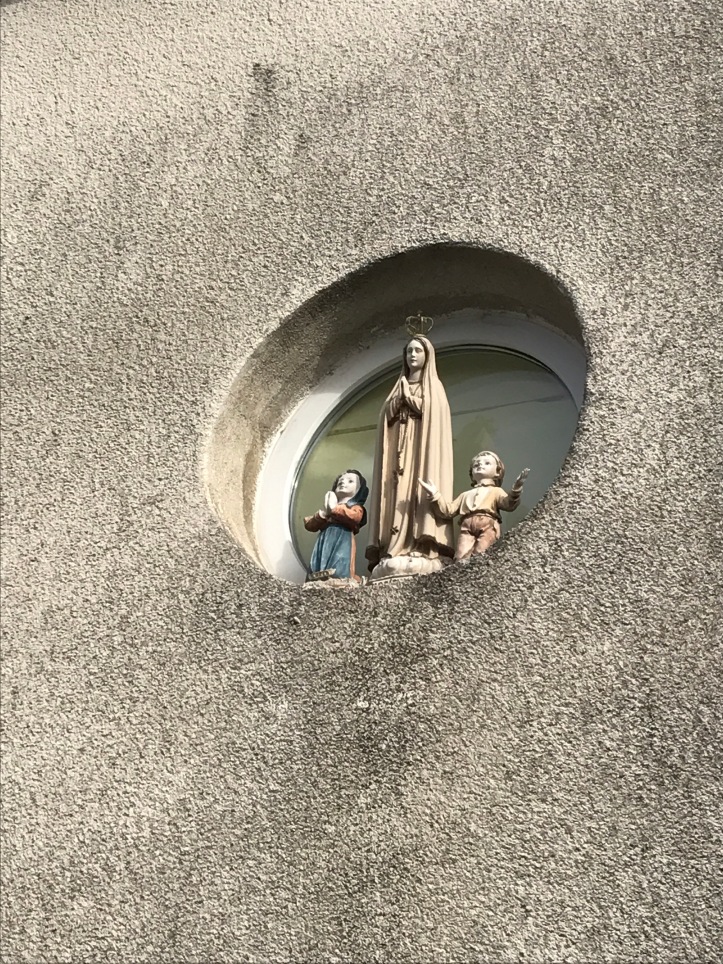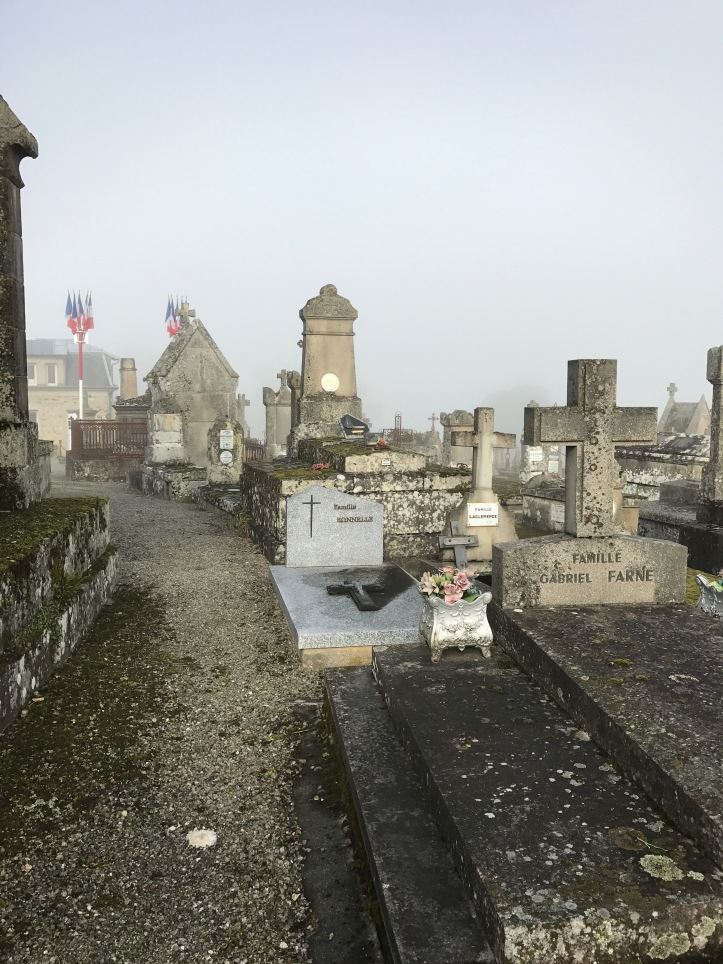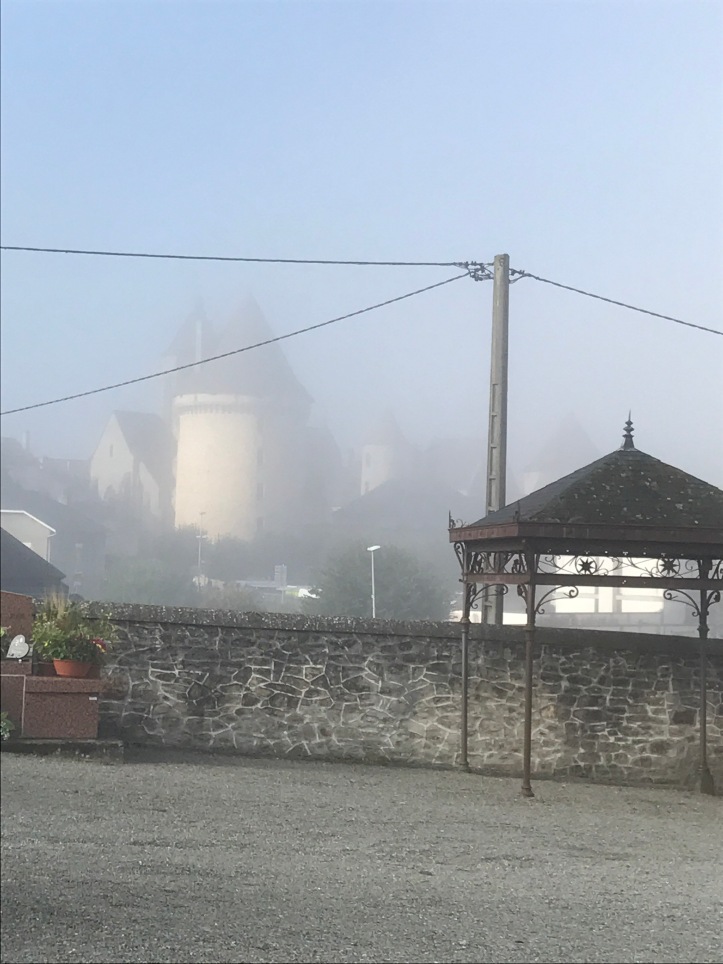Morning all…..
This newspaper cutting, with it’s inflammatory title, was shared by a local Facebook page some time ago, and I had to re-type it all out longhand to be able to translate it and figure out what it was all about. Some of my translations are likely to be quite literal, sadly the translation of Vampire I think is meant more as “a person that preys ruthlessly on others” rather than the dead that walks amongst us, but still a very fanciful read about grave robbery in the dead of night, even if blood was not imbibed.
I would like you to read this in your mind, using the voice of the mighty, and much missed, Sir Christopher Lee…..
First published in 1914.
A Profane Tomb
Vampires coveted the fairy-tale of the chatelaine.
Bourganeuf, by the depeche of our special envoy, here is a horrifying and gloomy story which, for several weeks, the Magistrate of Bourganeuf M. Bazat strives to clear up. It is about a dead person whose tomb has been violated in order to steal a treasure that was believed hidden there.
In the old tower, where towards the 15th century the Templars held captive Prince Zimzim, brother of the famous Bazajet Sultan, tower which still serves as prison where 4 accused are incarcerated. They are the gravediggers of the cemetery, Monsieur Batout Sexagenaire, who was said to be deported after the commune, and to whom the amnesty allowed to return to France, the daughter Leonie, a twenty-two year old brunette of tall height and with big, dreamy eyes, the gardener Poncet, forty-two years old, a kind of Quasimodo, vigorous skinny with his claudication and deformity, and finally the mother-in-law, here is the Widow Vergnaud, fifty-three years old, who for a long time earned her life by giving birth to the tombs on behalf of the families.
The burial that they are accused of having profaned and vandalised is that of a lady Tixier de la Chassagne, wife of Maugenest, who died in 1875 at the age of 26, shortly after her marriage.
Immensely rich, and related to high magistrates Mme Maugenest was of a marvellous beauty. She had a passion, the horse, and the old peasants remember having met the beautiful woman many times riding on the outskirts of her hunting grounds. A sickness of consumption reached the young honeymooner on her honeymoon, and knowing herself lost, wished to choose her place in the cemetery. She designed a site situated on a hillside, from which she could see the castle on the other slope of the valley where she had passed happy days when she was a child.
A granite mausoleum was erected on this site and, when death had done it’s work, the body of the deceased was carried there.
The rumour spread that Mme Maugenest had been clothed, before burying her, with a very expensive silk velvet dress, and had it adorned with her pearl necklace and her most precious jewels. It was added that the husband had made a deposit in the coffin of the gold pieces, known as marriage coins, according to the custom of the country, given to his future wife on the day of her engagement, a hundred gold pieces of 100 Francs were thus, it was said, locked up in the tomb.
Thirty nine years later.
Nothing for 39 years had disturbed the repose of the dead woman.
No evil vampire had dared to rob her of her so called treasure.
But, towards the end of January, on a cold, moonless night, a lady Vincent, who lives near the cemetery was occupied in the front of her home with a few small sewing works, when she heard a noise coming from the necropolis. Rushing shots, quite similar to those of a hammer striking strongly on a chisel. She called her husband. Both were at the window and saw a wavering gleam among the cypresses and the funerary monuments. They are flaming fires, says Monsieur Vincent, to calm the emotions of his wife.
A few days before, an anonymous letter reached Monsieur Treilches, Attorney General of the Republic. It denounced the violation of the burial of Madame Maugenest. The facts were verified as exact. The joints of heavy slabs closing the access of the vault had been freshly re-done with the aid of a cement which the specialists name “prompt cement”. The Mausoleum was opened, the oak lid of the coffin had been broken, and the zinc lining had an opening of seventy centimetres in length made by means of a shear. Inside the coffin were found, among the scattered bones, a sheet, stockings and shoes, all in good condition, but there was no trace of dress, jewellery or gold coins.
Some Findings
If the profanation of the tomb was paused, the materiality of the flight was less so. We looked for the parents who had attended the last moments of the chatelaine. They are, for the most part, deceased, and those who survive, do not preserve precise memories.
No-one could say whether they had left their jewels to the dead, or under what conditions they had been buried. Only the tinsmith who sold the zinc envelope of the coffin said he remembered very clearly that Mme Maugenest was, when buried, clothed in a dark coloured riding-dress.
Three witnesses, one of whom was a Monsieur Duteyrat, the proprietor of the house occupied by the deposed gardener, saw at the beginning of February a dress of rich appearance hanging on a wire in the garden of Poncet.
We searched for the dress, it was in vain, and justice had to content itself with seizing two pieces of silk velvet, which were abandoned on a rabbit cage.
The Presumptions
The magistrates also learned, that the woman Vergnaud had sold in the last days of January, for the sum of 8 francs, to a Monsieur Meunier, a jeweller at Bourganeuf, two rings having suffered deformation as a result of crushing. Questioned, Poncet’s mother-in-law claimed to have picked up these jewels a few years ago, in front of a tomb in the cemetery of Limoges.
It was known, on the other hand, that the gravedigger Batout, frequently made use of the quick cement that the vampires had used to reseal the slabs of the vault, and it was astonishing that he, who lives in the interior of the necropolis had not heard the sound of the hammer blows that aroused the attention of the Vincent couple.
An inquiry made at Limoges, where he had long resided, lit up the gardeners past with an unpleasant day. One of his former neighbours, Madame Desbrousses, declared having noticed twice that he was climbing the cemetery wall at night.
This bundle of presumptions led to the triple arrest of Batout, Poncet, and the Widow Vergnaud. Further investigations carried on by the mobile brigade at Clemont-Farrand led to the discovery of witnesses who claimed to have seen the accused perpetrate their macabre crimes.
They added that the gravedigger’s daughter had lent them a hand, and last Friday, Leonie Batout was in her turn, imprisioned.
The magistrate Monsieur Bazat, will now submit to the examination of an expert from Lyon, so that he can try to establish approximately the period of manufacture of the two shreds of velvet silk he seized.
He also proposes to proceed to a next night’s re-enactment of the lugubrious scene, in order to determine whether the witnesses who claim to have recognised the culprits, could have actually do so from the observation point which they were placed.
The four accused defended by Monsieurs Gloumeau and Perigaudon of the Bourganeuf Bar, will probably be sent back to the assize court of La Creuse, which will have to say the last word of this disturbing affair.
No 10 Newspaper Serial 10th March 1914.
Condemnation of the Vampires of Bourganeuf
Gueret, it is today that came before the assize court of Creuse the case of the vampires of Bourganeuf. The accused are 5 in number, JB Poucet aged 38, Bourganeuf gardener, Leonarde Chedeville, widow Vergnaud – mother-in-law of the pervious, Francois Battou – guardian of the cemetery of Bourganeuf, Leonie Battou – dressmaker, and Aimee Quinty – wife of Batteau.
In the course of January 1914, it was rumoured at Bourganeuf that people had been seen at night in the cemetery. A lady whose windows overlooked the field of repose, saw lights shining in the shadows and had heard the blows of a hammer striking the stone. The public prosecutor opened an enquiry, and it was established that the vault containing the remains of the Lady Maugenest, nee Tixier-Lachassagne, had been opened, and that the sepulchre had been violated. The thieved seized gold coins of 100 francs, 50 francs, and 40 francs, as well as jewels, diamonds, buckles, earrings and bracelets of the dead. The court condemned Poucet to 5 years of forced labour, the widow Vergnaud has 2 years in prison, Francois Battou has 2 years in prison, the woman Battou has two years in prison, and the court pronounced the acquittal of Leonie Battou.











Fabulously atmospheric photos!
LikeLike
Thankyou. Sometimes you’re just lucky with the light. x
LikeLike